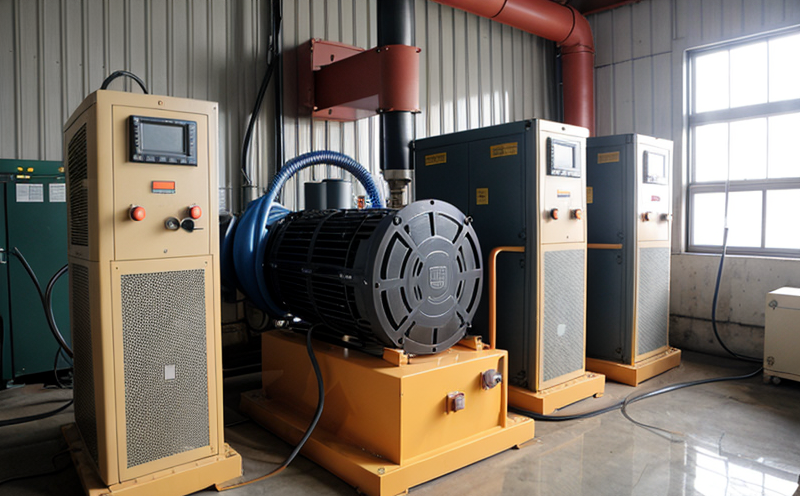ISO 13849 Safety Control System Testing in Power Generators
The International Standard ISO 13849-1:2015 provides a framework for safety control systems intended to protect personnel from risks associated with machinery and equipment. In the context of power generation, this standard ensures that critical components like turbines, generators, transformers, and other electrical equipment are designed and tested to meet stringent safety requirements.
The testing process is divided into several stages: initial design verification, functional tests under normal operating conditions, and worst-case scenario evaluations. Compliance with ISO 13849 helps manufacturers demonstrate that their products can withstand the most challenging operational environments without compromising on personnel safety or equipment integrity.
Our laboratory specializes in conducting these comprehensive tests to ensure that power generation equipment meets not only ISO standards but also local regulations and industry best practices. This service is crucial for ensuring reliable performance, preventing accidents, and maintaining compliance with international norms such as IEC 61508 and IEEE 242.
For R&D engineers looking to innovate in this field, our expertise can help guide the development process by identifying potential hazards early on. Compliance officers will find value in having a trusted partner who can provide detailed reports that meet regulatory requirements, thereby reducing the risk of non-compliance issues down the line.
Our approach begins with a thorough review of your design documentation to ensure it aligns with ISO 13849 guidelines. We then proceed with functional tests using state-of-the-art equipment designed specifically for this purpose. Once testing is complete, we provide comprehensive reports that detail our findings and recommendations.
By partnering with us early in the development cycle, you can gain valuable insights into how best to design your product according to these rigorous standards. This proactive approach helps minimize costs associated with post-production modifications while ensuring robust quality control throughout the manufacturing process.
Why It Matters
The implementation of ISO 13849 safety standards is essential for protecting personnel and preventing accidents in power generation facilities. These standards establish clear criteria for the design, installation, commissioning, operation, maintenance, and decommissioning of machinery and equipment.
- Reduces risk of injury or death due to mechanical hazards.
- Promotes a safer working environment by ensuring that all safety functions are properly validated before use.
- Ensures compatibility between different components within the system, reducing interoperability issues during integration.
The benefits extend beyond just personnel safety; compliant systems also enhance overall equipment reliability and longevity. By adhering to these standards, organizations can avoid costly downtime caused by failures or malfunctions, ultimately leading to improved efficiency and profitability.
Industry Applications
- Turbine manufacturers ensuring safe operation under extreme conditions.
- Generator producers validating the reliability of their products against international standards.
- Transformer suppliers demonstrating compliance with relevant safety regulations globally.
- Electricity distribution companies verifying the robustness of their substations and transmission lines.
In addition to these specific applications, ISO 13849 testing is applicable across various sectors including renewable energy sources like wind farms, solar plants, and hydroelectric dams. By adhering to this standard, companies can ensure that their installations are not only safe but also sustainable in terms of resource usage and environmental impact.
Quality and Reliability Assurance
- Compliance with ISO standards ensures consistent quality across different batches of products.
- Data-driven decision-making through rigorous testing protocols that provide objective evidence of performance levels.
- Prediction of potential failure modes allowing for preventive maintenance schedules to be optimized.
Our commitment to quality is reflected in our state-of-the-art facilities and highly trained personnel who adhere strictly to international best practices. We employ advanced diagnostic tools capable of detecting even the slightest deviations from expected performance, ensuring that every piece of equipment leaves our labs fully certified and ready for deployment.





